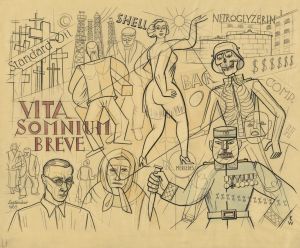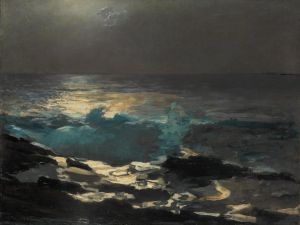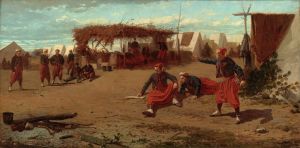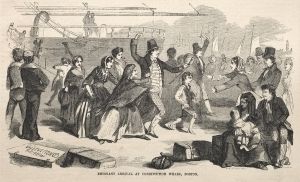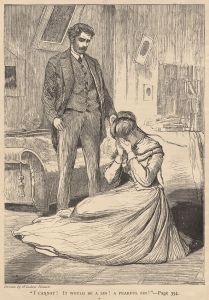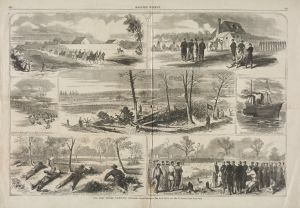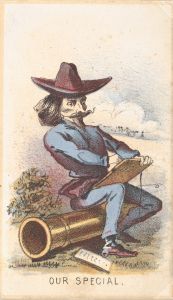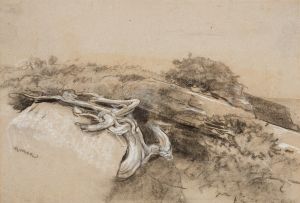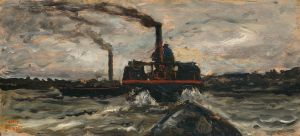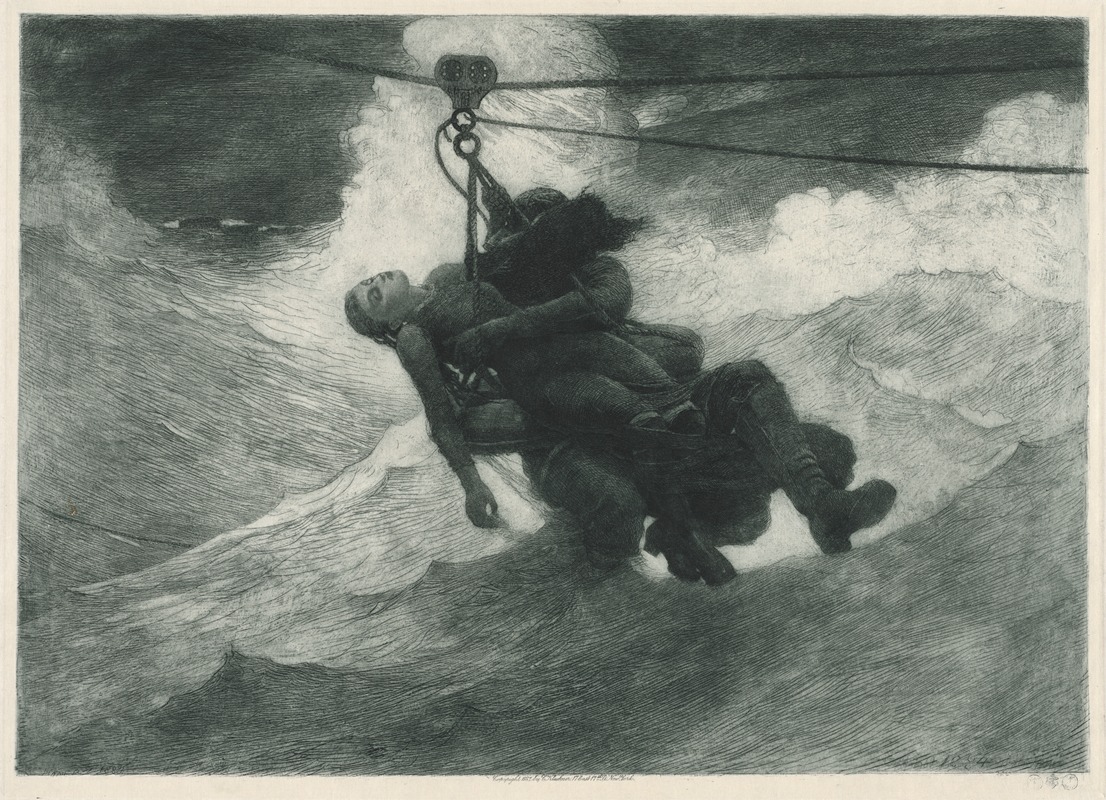
The Life Line
A hand-painted replica of Winslow Homer’s masterpiece The Life Line, meticulously crafted by professional artists to capture the true essence of the original. Each piece is created with museum-quality canvas and rare mineral pigments, carefully painted by experienced artists with delicate brushstrokes and rich, layered colors to perfectly recreate the texture of the original artwork. Unlike machine-printed reproductions, this hand-painted version brings the painting to life, infused with the artist’s emotions and skill in every stroke. Whether for personal collection or home decoration, it instantly elevates the artistic atmosphere of any space.
"The Life Line" is a renowned painting by the American artist Winslow Homer, created in 1884. Homer, known for his powerful and emotive depictions of the American experience, particularly in relation to the sea, produced this work during a period when he was deeply engaged with maritime themes. The painting is celebrated for its dramatic portrayal of a daring sea rescue, capturing the tension and heroism associated with life-saving efforts during the late 19th century.
The scene depicted in "The Life Line" shows a man and a woman suspended above tumultuous waves, connected by a breeches buoy—a life-saving device used to rescue individuals from shipwrecks. The breeches buoy, an essential tool in maritime rescue operations at the time, consists of a lifebuoy with a pair of canvas breeches (pants) attached, allowing a person to be safely transported along a rope from a ship to the shore or another vessel. This technology was a significant advancement in life-saving techniques and was widely used by life-saving services.
Homer's painting captures the moment of rescue with intense realism and drama. The man, whose face is obscured by the woman's body and the ropes, is seen holding the unconscious woman tightly as they are pulled to safety. The focus on the figures, combined with the swirling sea and the indistinct background, emphasizes the perilous nature of the rescue and the vulnerability of the human figures against the vast, powerful ocean. The woman's red scarf, blown dramatically by the wind, adds a striking visual element to the composition and draws the viewer's eye to the central action.
"The Life Line" reflects Homer's interest in the themes of human struggle and survival against nature's forces. This painting, like many of his works, is noted for its technical mastery and emotional depth. Homer employed a variety of techniques to achieve the dynamic effects seen in the painting, including the use of strong contrasts between light and shadow, and a carefully composed arrangement of elements to convey movement and urgency.
The painting was first exhibited at the National Academy of Design in New York in 1884, where it received significant attention and acclaim. It was praised for its vivid portrayal of a life-saving scene and its innovative use of perspective and composition. "The Life Line" is often regarded as one of Homer's masterpieces and is a testament to his skill in capturing the drama and heroism of maritime life.
Today, "The Life Line" is housed in the collection of the Philadelphia Museum of Art, where it continues to be admired by visitors and art historians alike. The painting remains an important example of Winslow Homer's contribution to American art, illustrating his ability to convey powerful narratives through his depictions of the sea and human interaction with it.





